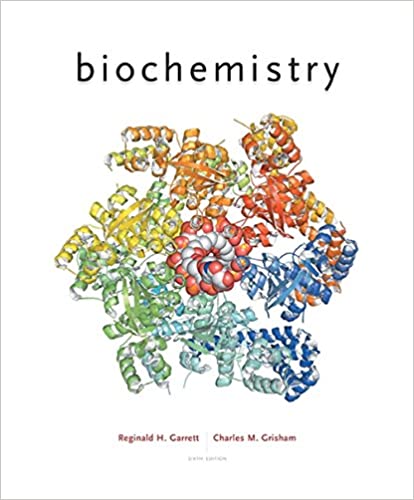
Biochemistry 6th Edition by Reginald Garrett,Charles Grisham
Edition 6ISBN: 978-1305577206
Biochemistry 6th Edition by Reginald Garrett,Charles Grisham
Edition 6ISBN: 978-1305577206 Exercise 1
The Principle of Molecular Recognition Through Structural Complementarity
Biomolecules interact with one another through molecular surfaces that are structurally complementary. How can various proteins interact with molecules as different as simple ions, hydrophobic lipids, polar but uncharged carbohydrates, and even nucleic acids?
Biomolecules interact with one another through molecular surfaces that are structurally complementary. How can various proteins interact with molecules as different as simple ions, hydrophobic lipids, polar but uncharged carbohydrates, and even nucleic acids?
Explanation
Proteins interact with other biomolecules through weak chemical forces or non-covalent bonds. The properties of the amino acid side chains that are present in a protein, influence other kinds of molecules, a protein can interact with.
Proteins can interact with simple ions through ionic interactions. Ionic interactions occur between molecules that are oppositely charged, such as if the protein had a negative charge and the ion had a positive charge. Proteins often interact with metal ions through ionic interactions.
Proteins can interact with hydrophobic lipids through hydrophobic interactions and Van der Waals forces. Hydrophobic interactions occur because water tends to exclude hydrophobic segments, such as those containing long carbon-hydrogen chains. These hydrophobic segments clump together away from the water. Van der Waals forces occur between all molecules but are stronger between larger molecules such as proteins and lipids.
Proteins can interact with polar but uncharged carbohydrates through hydrogen bonding. Both carbohydrates and many amino acid side chains contain hydrogen bound to oxygen. These two types of molecules have many potential hydrogen donor and acceptor groups.
Proteins can interact with nucleic acids by any of the above interactions. These interactions provide the protein with structural complementarity to the nucleic acid molecule. The protein recognizes the nucleic acid strand because of the many separate interactions that occur between the protein and the nucleic acid.
Proteins can interact with simple ions through ionic interactions. Ionic interactions occur between molecules that are oppositely charged, such as if the protein had a negative charge and the ion had a positive charge. Proteins often interact with metal ions through ionic interactions.
Proteins can interact with hydrophobic lipids through hydrophobic interactions and Van der Waals forces. Hydrophobic interactions occur because water tends to exclude hydrophobic segments, such as those containing long carbon-hydrogen chains. These hydrophobic segments clump together away from the water. Van der Waals forces occur between all molecules but are stronger between larger molecules such as proteins and lipids.
Proteins can interact with polar but uncharged carbohydrates through hydrogen bonding. Both carbohydrates and many amino acid side chains contain hydrogen bound to oxygen. These two types of molecules have many potential hydrogen donor and acceptor groups.
Proteins can interact with nucleic acids by any of the above interactions. These interactions provide the protein with structural complementarity to the nucleic acid molecule. The protein recognizes the nucleic acid strand because of the many separate interactions that occur between the protein and the nucleic acid.
Biochemistry 6th Edition by Reginald Garrett,Charles Grisham
Why don’t you like this exercise?
Other Minimum 8 character and maximum 255 character
Character 255


